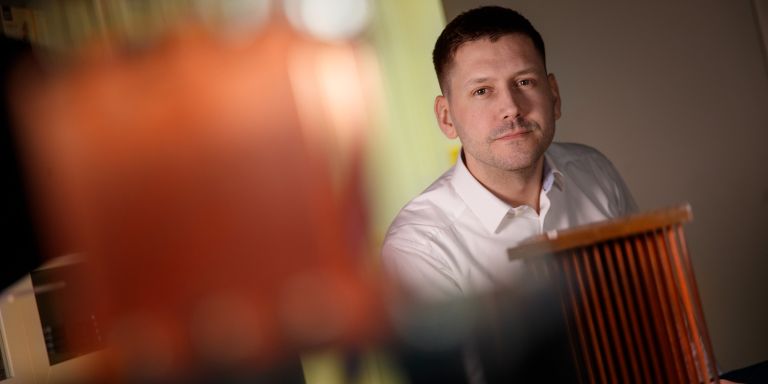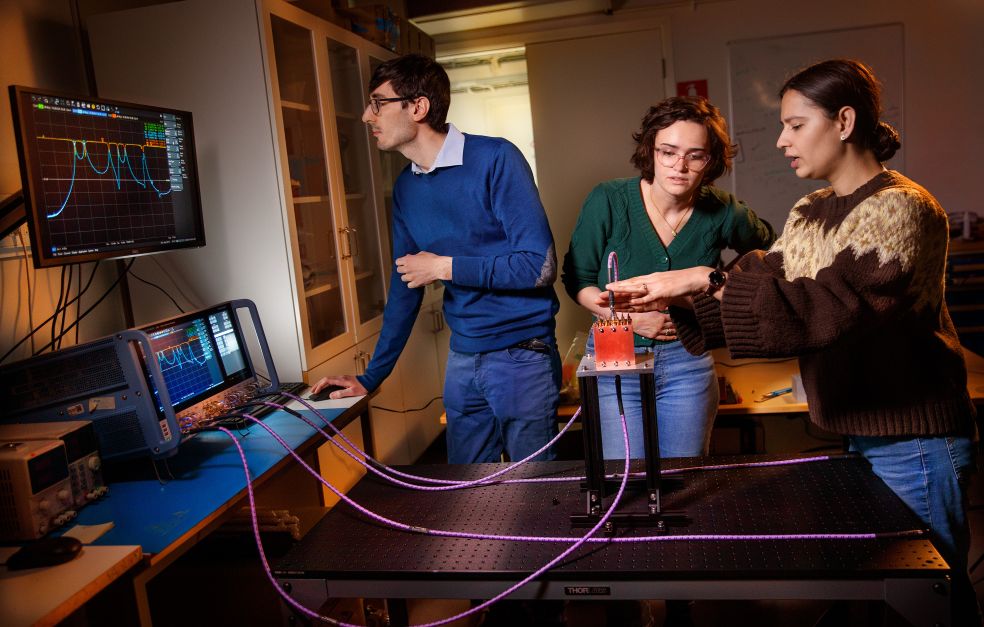
Project Grant 2022
Tuning into Dark Matter
Principal investigator:
Dr. Jón Gudmundsson
Co-investigators:
Stockholm University
Jan Conrad
Frank Wilczek
Institution:
Stockholm University
Grant in SEK:
SEK 27.5 million over five years
The idea of dark matter is attributed to Fritz Zwicky, an Austrian astronomer. In the early 1930s he made observations showing that galaxies in clusters of galaxies were moving too quickly. His explanation was that there must be invisible matter imparting the necessary gravitational force to galaxies.
That invisible matter was given the name “dark matter”, since it interacts with neither light nor electromagnetic radiation. In the ninety or so years since this discovery was made, researchers have gathered a body of evidence for the existence of dark matter.
“We see the existence of dark matter in numerous wholly independent astrophysical observations, including galaxy rotation curves, in gravitational bending of light around large galaxy clusters, and in the cosmic microwave background radiation — the oldest light in the universe. But we still do not know what dark matter is,” says Jón Gudmundsson of Stockholm University.
New suspect
Several suspects have been identified in the search for dark matter. Most of them have been hypothetical particles with the trait of interacting very weakly with their surroundings. This project, funded by Knut and Alice Wallenberg Foundation has targeted the axion, a particle postulated by Nobel prizewinning physicists Frank Wilczek and Steven Weinberg.
But so far no one has managed to prove that axions do in fact exist. In recent years, some doubts were raised about whether researchers were looking in the right way. Scientists at University of California, Berkeley recently presented new simulations of events in the universe during the very first moments after Big Bang – the same time as axions are thought to have been created.
“Those theoretical simulations indicated that we should be looking for axions with a higher mass than those we have previously targeted. But since this is so much harder to carry out experimentally, this is causing some headaches for scientists.”
In their search for the axion, the researchers must carefully engineer systems that provide perfect conditions for detection. When axions propagate through regions of strong magnetic fields, some will create particles of light – photons – that can be detected. But if the axion has a greater mass than has been thought, then conventional experiment design calls for much smaller detectors– detectors so small it will be extremely difficult to detect the weak signals produced by axions in the experiments.
But Wilczek’s research team at Stockholm University recently published a potential solution. They presented the idea of filling the detector with fibers of a metamaterial, i.e. an artificial material whose physical properties can be tailored. The fibers may make it easier to induce axions with a higher mass to vibrate, which would generate more signals. But merely filling the detectors with fibers is not enough. Gudmundsson elaborates:
“Since no one knows exactly what mass an axion has, we must be able to adjust the detector’s mass sensitivity during the experiment. It’s a bit like turning the dial of an old radio to search through the frequency band.”
Multiple versions good to go
Gudmundsson leads the way down to the basement at Albanova University Center, where his research team has its laboratory. Resting on a bench in the windowless facility are several versions of the detector. A team of PhD students and postdocs is developing and testing various potential ways of modifying the detector’s sensitivity. One approach is to use a matrix of copper threads that can be rotated, affecting the resonance status of the metamaterial itself.
“When we’ve completed the construction of a detector, we’ll send it to Yale University, where it will be placed in a very strong magnetic field and cooled to cryogenic temperatures. After that we can start looking for the axion,” Gudmundsson says.
The project is being conducted under the auspices of an international consortium known as ALPHA – Axion Longitudinal Plasma Haloscope, which involves ten research organizations and nearly 50 people.
“We hope to have a working experiment ready in about three years. To succeed, we’ll need a combination of hard work, innovativeness and investment, and probably also a good measure of luck.”
If the existence of the elusive axion can be proved, it will not only provide the answer to the riddle of dark matter; it will also resolve another fundamental problem in particle physics, namely an electromagnetic peculiarity of the neutrons.
“Each cubic centimeter in the room we’re sitting in may be filled with trillions of axions that are invisible to us. If this is true, we need to understand the implications of this for all fundamental theory,” Gudmundsson concludes.
Text Magnus Trogen Pahlén
Translation Maxwell Arding
Photo Magnus Bergström





